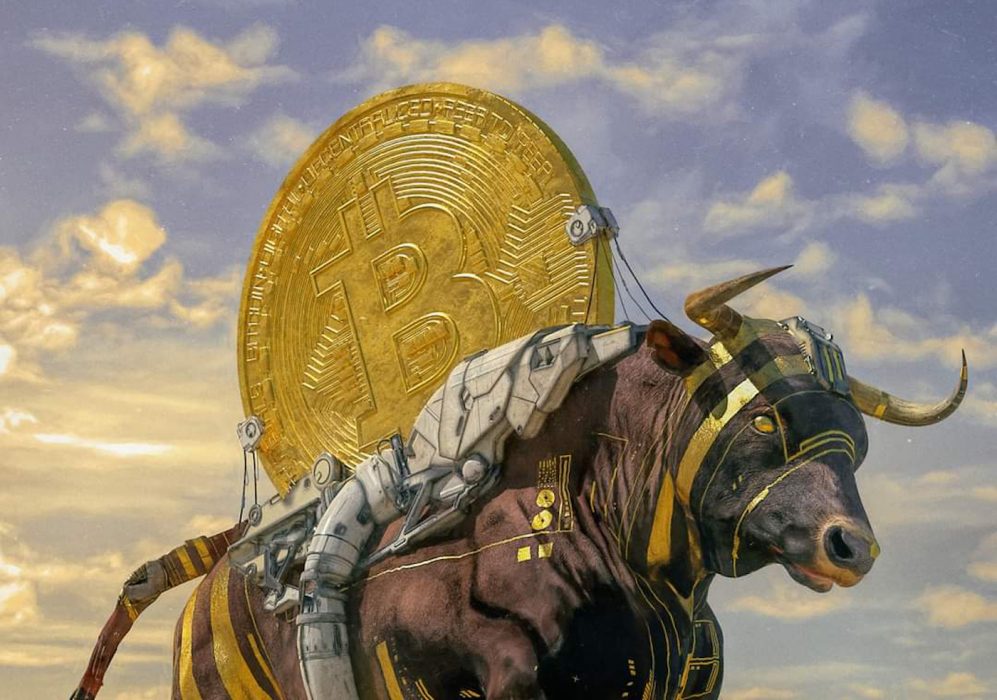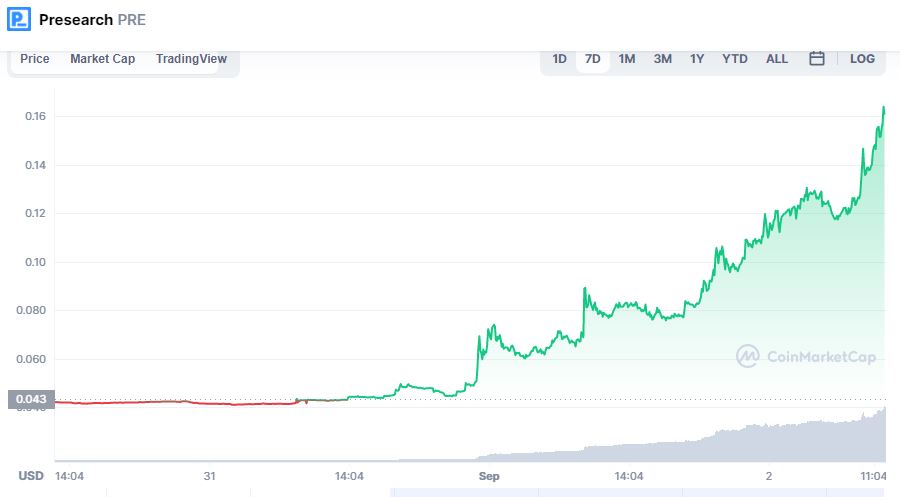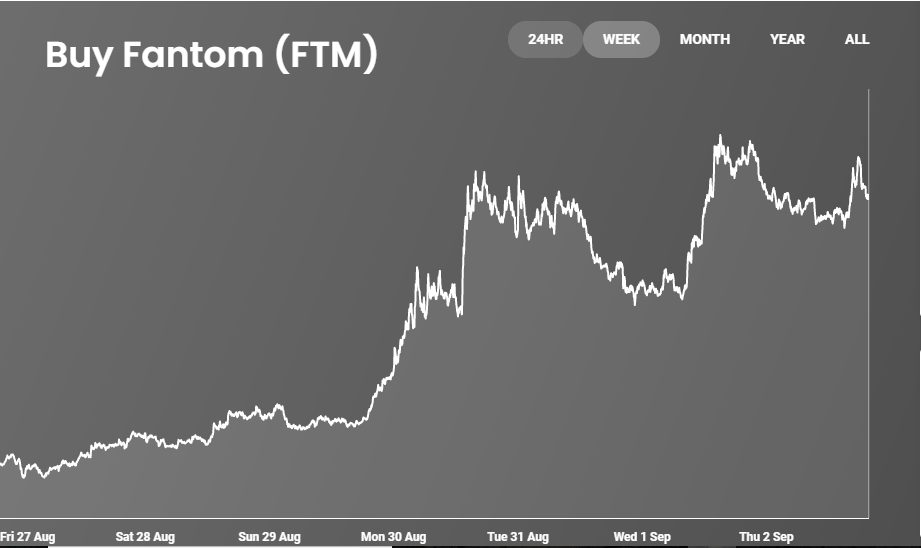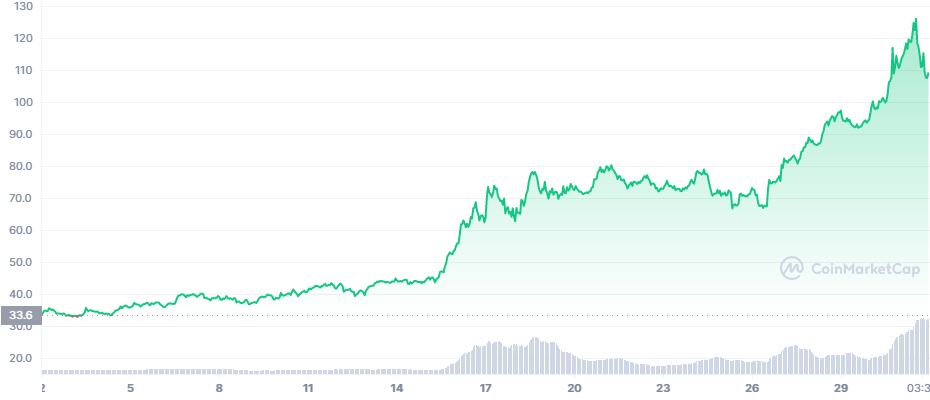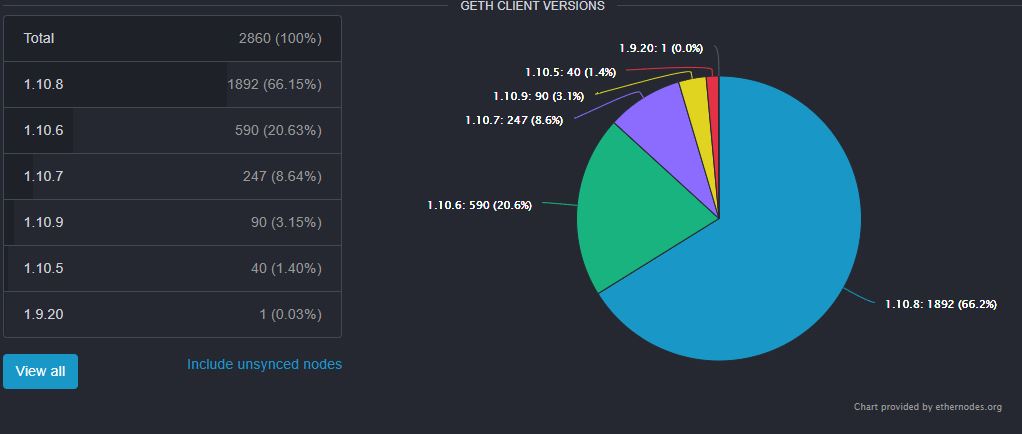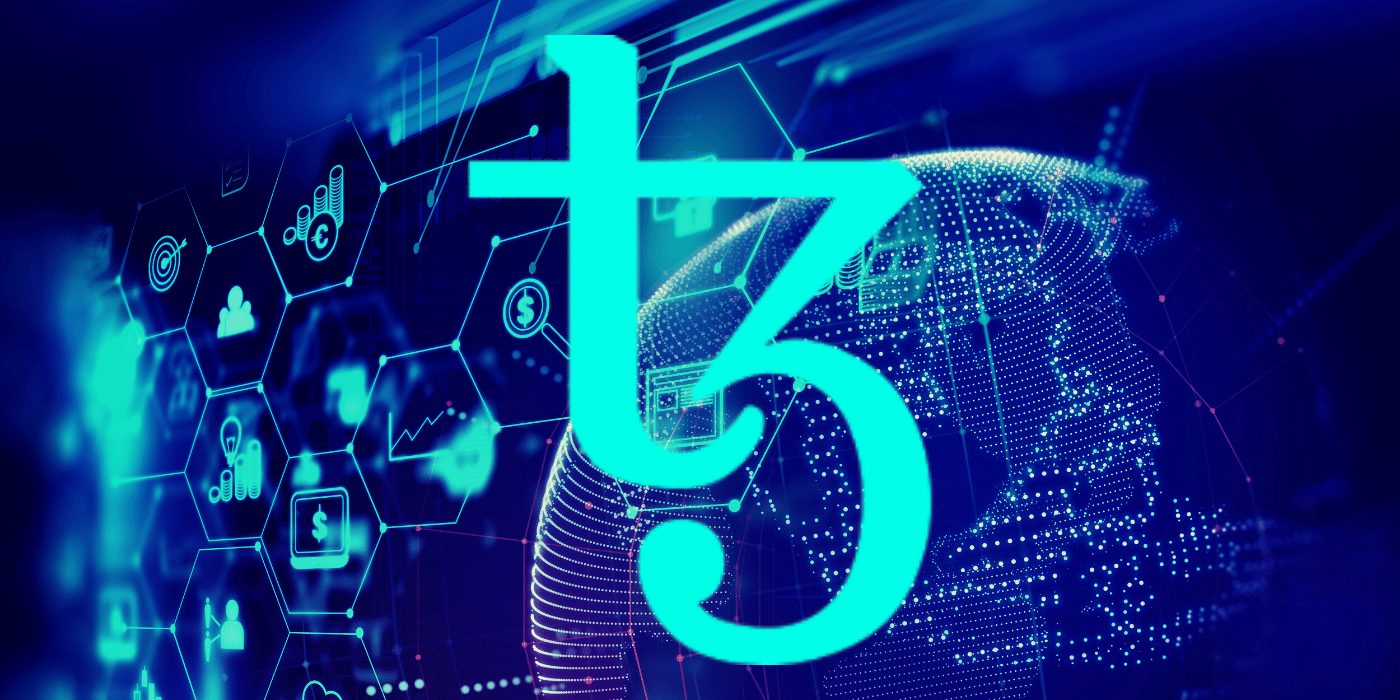Cardano’s ADA token has broken the US$3 mark on September 2 as it approaches Alonzo, the much-anticipated hard fork for the blockchain.
Cardano (ADA), the third-largest cryptocurrency by market cap (US$93.7 billion) behind Ethereum’s (ETH) (US$439 billion), is scheduled to release its much-awaited Alonzo update to the blockchain, which will add smart contracts to its functionality.
Since the announcement by lead developers at IOHK earlier this month, ADA’s price rose nearly 10 per cent in one day, pushing its all-time high to US$3.09.
Cardano Now in Phase 3 of 5
A major network update is known as a “hard fork” and is generally seen as a major milestone for blockchain companies in development.
The Cardano network is in the third phase of its five-era road map, which is currently in the “Goguen” era and aims to add smart contract functionality to Cardano. By giving developers the ability to build decentralised applications on the blockchain, the ecosystem should start to expand, bringing more utility and value to the chain.
The Alonzo hard fork is scheduled for September 12 and in the meantime tests are being done to ensure Cardano’s smart contract language, Plutus, is working properly.
Cardano has been busy with some serious development, also releasing its new Djed stablecoin to protect it from volatility in the market, making it useful for its DeFi operations.
ADA Up More Than 2300% in a Year
Cardano (ADA) is up more than 130 percent over the past 30 days and is up more than 2,300 percent over the past year. With the news of the smart contract update, the price rose to new all-time highs. At the time of writing, ADA is trading at US$3.017, with the price up nearly 15 percent since the beginning of this month.
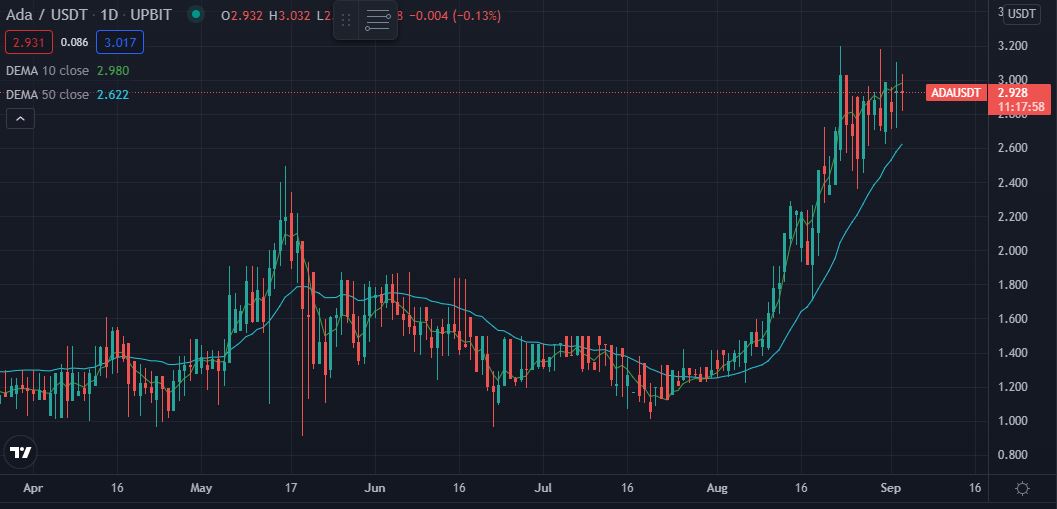
A recent report also shows that the number of Cardano millionaires has mushroomed by 1,850 percent from 3,625 on July 20 to 9,830 on August 24.



